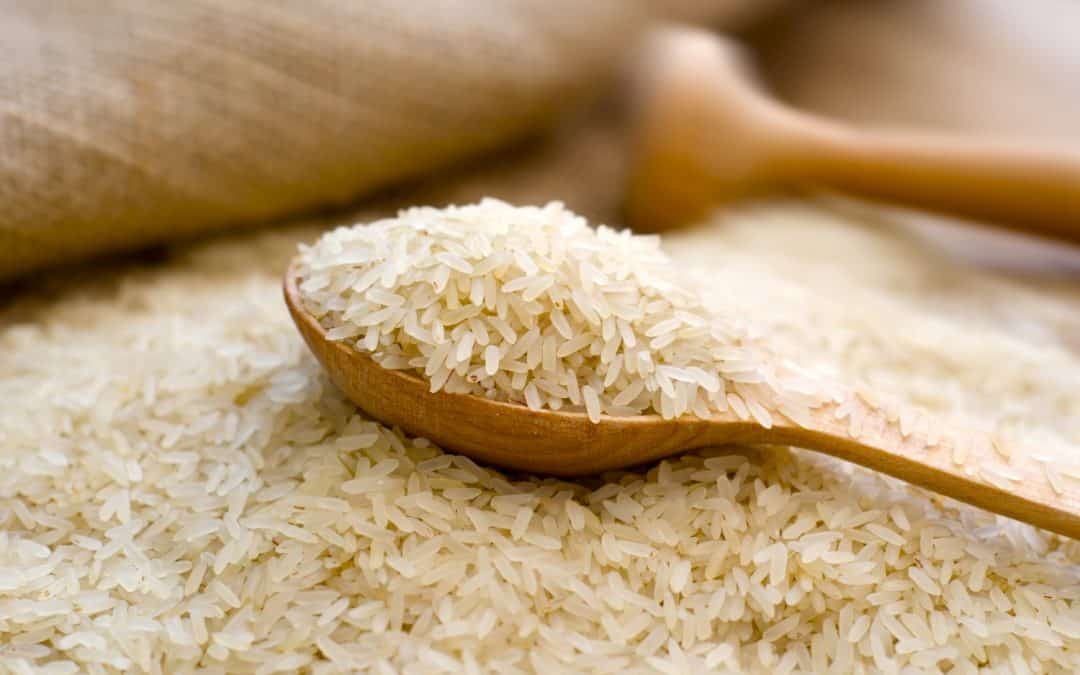Rice – cooked grains
Rice builds ojas (Vital Essence). Ojas is said to have the smell of burnt rice. Of rices, Basmati is the most Sattvic and aromatic.
Rice is nourishing and easy to digest. Rice offers more calories with less effort from the digestive organs. Plain rice is a good late night snack that will not disturb digestion. Strained water from cooked rice can be made into a gruel and treat diarrhea. It is a valuable food for those recovering from an illness.
Brown rice, although nutritionally superior, is harder to digest than white rice. A person with a compromised digestive tract may not be able to absorb these nutrients. Poorly digested food transforms into phlegm in the digestive tract. White rice is recommends for anyone suffering from gas, bloating, or indigestion.
Rice that is cooked ‘al dente’, without enough water, can cause gas, bloating and constipation for Vata people. If rice gives you gas, add extra water and cook the rice until soft and puffy.
Properties
Taste: Sweet, Astringent
Natural Attributes: Oily, Light, Moist
Tissue impact (Vipak): Sweet, Nourishing
Thermal impact (Virya): cooling
Dosha impact: Decrease Pitta and Vata, Increase Kapha
Digestive impact (Agni): easy to digest, light
Channels (Srotas): slows down movement
Feces: absorbs and retains; Constipating (white rice)
Urine: diuretic (brown rice)
Strength (Bala): improves strength and immunity
Mind (Manas): Sattvic
Effect: Aphrodisiac, digestive stimulant, appetizer, anthelmintic (raw, at morning), Astringent, Tonic, Expectorant
Chinese five element impact: Earth and Metal elements
Chinese medicine syndromes: Strengthens the Spleen
Medicinal properties
- Nourishment (rasa): fever, fainting, emaciation, fatigue, increase weight, benefits the voice
- Blood-circulation-liver: skin disorders
- Muscles: hernia
- Bones-joints-tendon-ligaments: fractures
- Reproductive and hormonal systems: increase fertility
- Vital essence: allergies
- Respiratory system: phlegm conditions,
- Digestive system: stomach ache, ulcer, inflammatory disease of the intestines, heartburn, burning sensation, hemorrhoids, diarrhea, absorbent of nutrients, irritated or inflamed gut
Harmful: may cause constipation
Varieties
White Rice: very easy to digest therefor recommended when the digestive system is very weak. If causes constipation, either refrain, or cook into a diluted porridge.
Basmati Rice: is slightly aromatic, and is considered lighter than other rice’s, making it more appropriate for damp, overweight, or other stagnant conditions. Very easy to digest, dries excess phlegm and treats stagnation. GOOD FOR ALL THREE DOSHAS
Brown Rice: slightly harder to digest, balances glucose levels in the blood, rich in fiber and alleviates constipation, diuretic, clears phlegm, nutritious, rich in vitamin B and therefore beneficial for the nervous system, as it helps to relieve mental depression. A handful of raw brown rice chewed thoroughly as the only food in the first meal of the day helps expel worms. Short grain rice has a nutty flavor, chewy consistency, and is better for the nervous and frail person. Sometimes the roughness of brown rice can irritate the gut, compared to basmati rice.
short grain brown rice is the smallest and hardiest and contains the most minerals. it is naturally sweet to the taste and the most suitable for daily consumption. Medium grain brown rice is slightly larger and cooks up slightly softer and moister. It too is excellent for daily consumption. Long grain brown rice, the most elongated variety, is light and fluffy when cooked. it is the type favored in the tropics and in the southern regions and sunbelt of the USA. it can also be used in puddings and deserts.
Sweet rice: a variety of brown rice with a lighter color. Its white form is used for sushi. Sticky and sweet, it is slightly harder to digest, suitable for emaciated people, as it contains more protein and fat than other rice. Sweet rice can worsen diseases marked by phlegm and mucus. in addition, it should be avoided by those with deficient digestive fire. Because of its astringent property, white sweet rice treats excess heat and its symptoms of diarrhea, excess perspiration and urination. Sweet rice dishes and beverages are also recommended for babies, children, and nursing mothers.
Wild rice: this slim dark grain has more protein than other rice, it is rich in minerals and B vitamins and is a hardy food for cold climates. It cools the skin but concentrates warmth in the interior and lower body areas. Benefits the kidneys and bladder.

